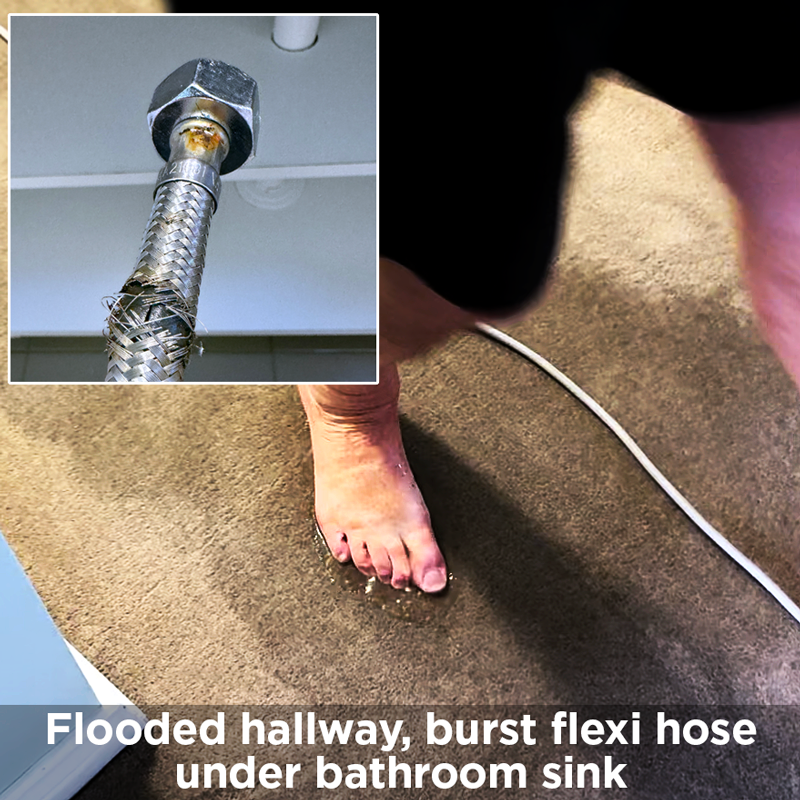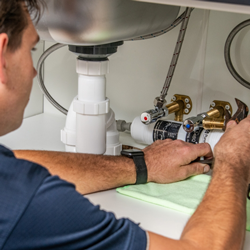The flexi hose, commonly used in plumbing, can be a ticking time bomb if not properly maintained.
Most people don’t consider that the flexi hose (often used under your kitchen and bathroom sinks) have a limited lifespan.

The thin outer mesh layer of a flexi hose plays a crucial role in maintaining its integrity. If this layer is compromised, even slightly, it can expose the inner thin rubber tube to pressure and wear. This leads to bulging and, ultimately, bursting!
- Regular Inspections:
Check for wear and tear: Inspect hoses for cracks, bulges, or corrosion. Corrosion may look like rusted spots on the flexi hose. Look for any signs of leaks around fittings and connections also. - Know the Lifespan:
Replacement schedule: Flexi hoses typically last 5-10 years. If yours are nearing this age, consider replacing them proactively. - Choose Quality Products:
Invest in quality hoses: Not all flexi hoses are created equal. Look for hoses made of durable materials and those that meet industry standards. - Install Properly:
Professional installation by a licensed Plumber: Hire a plumber on the Central Coast to install or replace hoses to ensure they’re fitted correctly and securely.It’s important to know where the plumbing shut off valves are in your Gosford or central coast apartment. - Consider Shut-off Valves:
Install shut-off valves: Having accessible shut-off valves can help you quickly stop water flow in case of a leak / burst flexi hose. - Monitor Water Pressure:
Check water pressure: High water pressure can stress hoses. A pressure regulator can help manage this and prolong the life of your hoses. You are best to get your plumber’s help with this. - Be Aware of Environmental Factors:
Location considerations: Environmental factors such as corrosive conditions can affect the integrity of hoses, this includes living close to the beach. Protect hoses from exposure to harsh conditions. - Have a Maintenance Routine:
Create a schedule: Set reminders to inspect hoses regularly and keep an eye on the overall plumbing system. - Know the Signs of Trouble:
Listen and look: Pay attention to unusual sounds or dampness in areas near hoses, which can indicate a problem. - Be Prepared:
Emergency plan: Have a plan in place for potential flooding, including access to shut-off valves and emergency contacts like your Central Coast plumber, Thoroughgood Professional Plumbing Services.
By following these steps, you can minimise the risk of flexi hose malfunctions and protect your home from flooding. Regular maintenance and vigilance are key!
Contact our Thoroughgood Plumbing team if you notice any of the warning signs above of a potential flexi hose failure. OR if you have any questions about this, we are happy to answer your questions – give us a call.
If you see any kinks, discolouring or breaks in the surface of the flexi hoses, or their over 10 years old – they need replacing immediately by a licensed plumber to prevent a burst pipe, major leak and/or flooding in your home.








